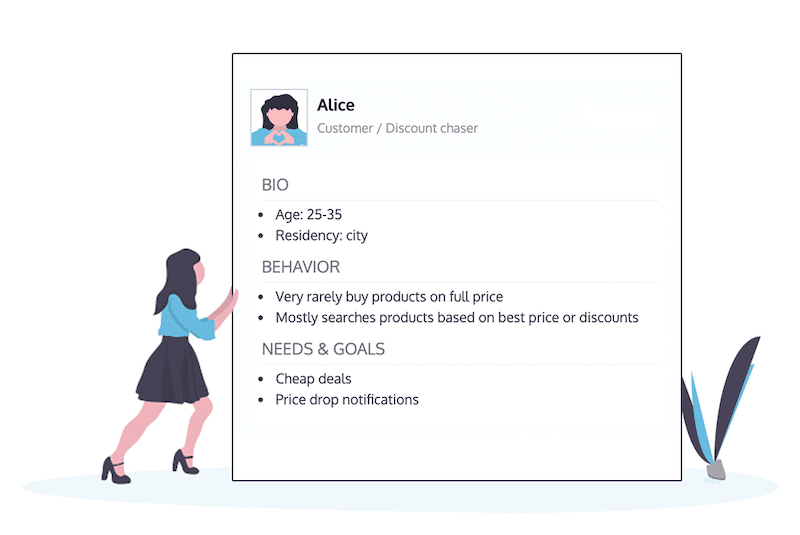What Is a User Persona Card?
These cards help you understand your customers better and build more empathy. User personas or simply personas are fictional, generalized characters that encompass the various needs, goals, and observed user behavior patterns.
User personas help the product manager and other members of the product team to understand the key characteristics of a particular user group. Creating user personas is a key part of the agile product development process, and it is essential to do it at the beginning of the product planning process i.e. during the product discovery phase.
You’ve probably heard this definition before, and if you’ve ever tried user persona design, you’ve realized how difficult it is to create usable and realistic user personas.
Follow us in this short read for tips on where to start.
Contents
Standard Data on Persona Cards
Persona cards or persona card templates usually start with a fictional name and picture or avatar. These two basic details help you to build up and keep the connection between stakeholders and the target audience of your product.
But that’s not all, you may add an image, an age, location, education, hobbies, and more characteristics to get to know your user personas better and understand the users better by defining them based on their needs, behaviors, goals, and motivations.
These help the product team members to imagine and empathize with users. User Personas were originally used as a UI/UX Design tool to build empathy and keep the user at the center of the product design process.
Persona Group or Job Role
The end-to-end product management tool StoriesOnBoard handles this detail with higher priority, that’s why we created a unique field for it. No matter what information you collect about your product’s audience or your product’s target user group, the starting point of creating a user persona is the description.
If you have a B2C product you should add user persona groups (e.g.: hikers, dog owners, etc.), but if your team develops a product for businesses then you better use job roles (e.g.: product owner).
Challenges or Pain Points With the User Story Cards
If you already know your typical user’s job, you’ll easily make up for the challenges or pains in this role. In agile user-centered product development, the product has to solve a user’s issue or has to support the user to overcome challenges. For better understanding do market research or make interviews with the target audience.
Goals and Benefits of User Story Cards
Try to discover customers’ goals, it’s an additional opportunity to build better services or products. By improving user gains you can take advantage of your branch.
Company and Branches on User Story Cards
If your persona’s challenges are too common or hard to determine, you can segment your users by company. In most cases, it helps to specify the user’s pain points. Try to solve them and your customer base will grow faster than ever.
Interests and Hobbies on User Story Cards
Collecting this data gives good tips for marketers, on where to promote the product. Following described mediums, you can do secondary market research or understand your audience better.
